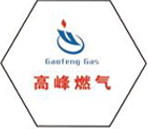
Nov . 12, 2024 14:47
Back to list
صمام تنفيس أمان الغاز
Understanding Safety Relief Valves for Gas Applications
In the realm of gas applications, safety is paramount. One crucial device that ensures safety in gas systems is the safety relief valve. Known in Arabic as صمام تنفيس أمان الغاز, this component plays a vital role in preventing overpressure situations that can lead to catastrophic failures, fires, or explosions. Understanding the function, design, and importance of safety relief valves is essential for anyone involved in gas handling and storage.
What is a Safety Relief Valve?
A safety relief valve (SRV) is a mechanical device designed to automatically release pressure from a gas system when it exceeds a predetermined limit. This safeguard is crucial because excessive pressure can cause tanks, pipelines, or other storage containers to rupture. The SRV opens at a specific pressure setting and allows excess gas to escape, thus preventing a dangerous buildup of pressure.
How Does It Work?
The operation of a safety relief valve is straightforward but highly effective. The valve contains a spring-loaded mechanism that holds a disc tightly against its seat. As pressure builds up in the system, it eventually reaches a level that overcomes the spring force. At this point, the disc lifts off the seat, allowing gas to discharge safely into the atmosphere or a designated venting system. Once the pressure decreases to a safe level, the spring pushes the disc back onto the seat, closing the valve and stopping the flow of gas.
Types of Safety Relief Valves
There are several types of safety relief valves, each suited for different applications. The most common include
1. Spring-Loaded Relief Valves These are widely used in various gas systems. The valve operates based on the balance of pressure and spring force.
صمام تنفيس أمان الغاز

2. Pilot-Operated Relief Valves These valves use a smaller pilot valve that controls the larger main valve. They are ideal for high-pressure applications and provide enhanced accuracy.
3. Balanced Bellows Relief Valves These valves utilize a bellows mechanism to minimize the effects of back pressure, making them suitable for volatile scenarios.
Each type has specific applications, and choosing the right one depends on the operational requirements, including the type of gas involved, pressure thresholds, and environmental considerations.
Importance of Regular Maintenance
Regular maintenance of safety relief valves is crucial to ensure their proper functioning. Over time, factors like corrosion, buildup of debris, or wear and tear can impair their operation. Routine inspections should include checking the pressure settings, cleaning the valve, and replacing any damaged components to ensure they operate effectively when needed.
Regulatory Compliance
In many countries, standards and regulations govern the installation and maintenance of safety relief valves. Compliance with these regulations is not only legally required but also essential for the safety of personnel and the surrounding environment. Organizations must adhere to local codes, international standards, and manufacturer guidelines when installing and maintaining these devices.
Conclusion
In summary, safety relief valves are critical components in gas systems, providing an essential safety barrier against overpressure incidents. By understanding their operation, types, maintenance requirements, and regulatory importance, stakeholders can enhance safety measures in gas applications. Investing time and resources into properly selecting, installing, and maintaining these valves ensures a safer working environment and helps prevent potentially disastrous outcomes. As gas technologies evolve, the role of safety relief valves will continue to be a pivotal aspect of operational safety in the industry.
Latest news
-
Safety Valve Spring-Loaded Design Overpressure ProtectionNewsJul.25,2025
-
Precision Voltage Regulator AC5 Accuracy Grade PerformanceNewsJul.25,2025
-
Natural Gas Pressure Regulating Skid Industrial Pipeline ApplicationsNewsJul.25,2025
-
Natural Gas Filter Stainless Steel Mesh Element DesignNewsJul.25,2025
-
Gas Pressure Regulator Valve Direct-Acting Spring-Loaded DesignNewsJul.25,2025
-
Decompression Equipment Multi-Stage Heat Exchange System DesignNewsJul.25,2025

